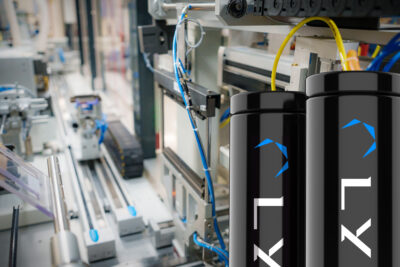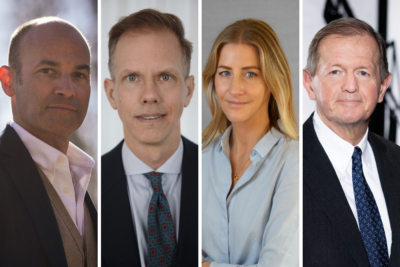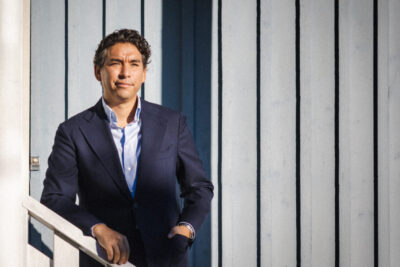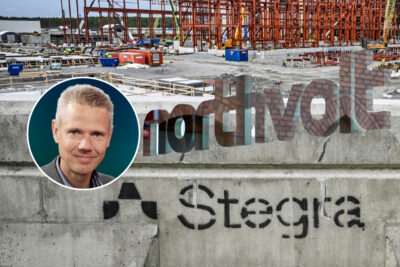”I look up to Investor”
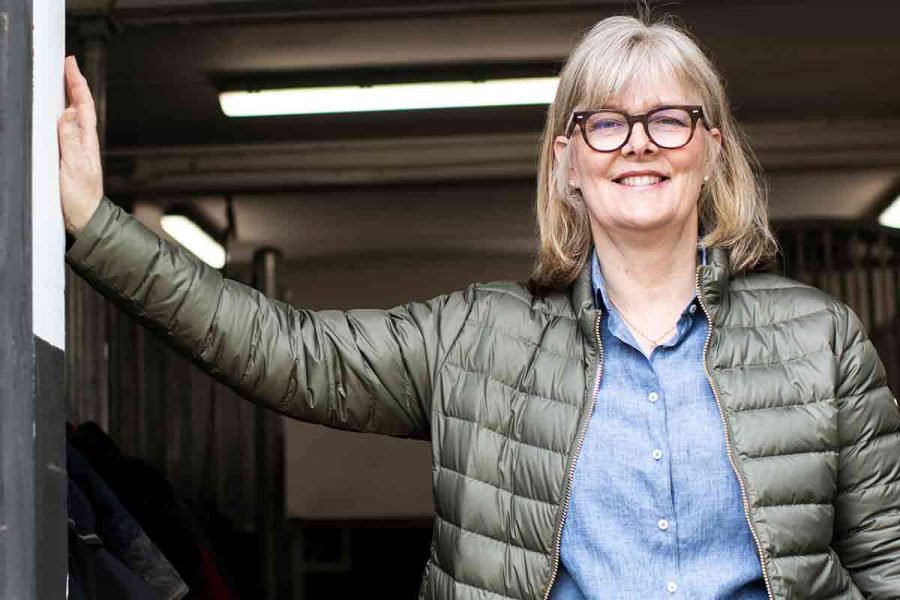
”In fact, we have lower margins on all COVID-19 related products”
The medical technology company AddLife, a group of more than 70 companies, is one of the Stockholm Stock Exchange’s big pandemic winners. During the first quarter of this year, CEO Kristina Willgård was able to report organic growth of over 50% and a threefold increase in profit.
Among other things, AddLife has benefited from increased turnover in the Group’s diagnostics companies, linked to corona tests, as well as a sharp increase in demand for protective equipment and, for the research companies, a high level of activity in virus research. But the pandemic itself is not the whole explanation, says Wilgård.
”Our culture and decentralised operations are the reason for our success”, she explains.
How should we look at AddLife? Is it a conglomerate of a collection of small businesses?
”I don’t see AddLife as a conglomerate. We have a variety of subsidiaries with different offerings but an incredibly strong common DNA that allows us to combine the benefits of small scale companies with the power and resources of big business. We don’t operate in a pyramid structure. Instead, we have a flat organisation. If we’re doing well, it’s only because our companies out there are making the right decisions and doing the right things. We at the head office support our subsidiaries with business development. I find it effective; it’s simple and unbureaucratic. It’s always comes down to having the right people. We have great CEOs who make good business decisions every day. So why should we have more central organisation?”
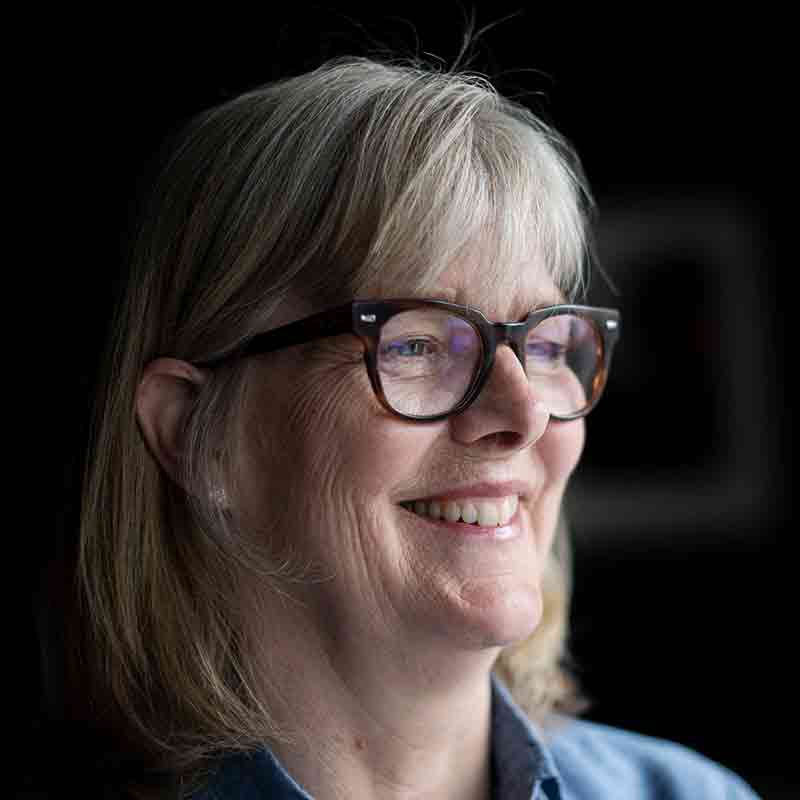
KRISTINA WILLGÅRD
Born 1965 in Nybro
Master of Business Administration at Lund, 1989.
CEO of the listed medical technology company AddLife since 2015 with Håkan Roos and Tom Hedelius as main shareholders.
Married to Jan Willgård, former CEO of the life insurance company St Erik.
Lives on a horse farm north of Stockholm where the family trains, races and breeds horses
.
Summer home on Öland.
Previous assignments include CFO of Addtech AB, CFO of Ericsson AB, CFO of Netwise, CFO of Frontec, business controller of Spendrups and auditor of Arthur Andersen.
Board member of Mölnlycke and Addnode. Previously also in Nordic Waterproofing.
And that model worked even in extreme situations like the pandemic?
”With our way of working – pursuing small-scale and entrepreneurial activities on a large scale – which we have been doing since Bergman & Beving started in 1906 (AddLife is a spin-off from Addtech, itself a spin-off from Bergman & Beving), there is a huge power to draw on. I don’t think we would have done so well in the pandemic if we had a classic pyramid structure. In our decentralised world, the response to the pandemic was, ‘How can I solve this and turn a difficult market situation into an opportunity?’. My CEOs called and said ‘Let’s do this’, which shows drive and commitment”.
In the first quarter of this year, sales (including acquisitions) increased by 65% to SEK 1.7 billion. Before corona, growth was a more moderate 4%. The profit margin reached a record 19%. Has AddLife taken advantage of the pandemic to raise prices?
”Certainly not. Early on, we decided not to raise our prices but rather to ensure that we remain a long-term partner to our customers after the pandemic. In fact, we have lower margins on all COVID-19 related products. The profit margin growth is largely due to the effect of sharply higher volumes – and not because we raised our prices in response to increased demand. The entire organisation has been driven by an extraordinary sense of responsibility to solve pressing societal challenges through great commitment and ingenuity”.
And yet the profit margin has more than doubled!
”We have sold very high volumes. But our fixed costs have not increased. In particular, over the last year, we have sold very large quantities of COVID tests, a product that did not exist a year ago. Different countries have had different strategies. As a distributor, we have been able to sell many vendors’ products. This has been a strength for us and has enabled us to help customers with different technology platforms”.
Do you feel that the high profit margin is a burden for you? That the market will be disappointed if you don’t live up to it for the rest of the year?
”No. The market is wiser than that. We have been very clear throughout that these have been extraordinary times and that a margin of 18.8% is not sustainable in the long term. Volumes will stabilise, and we will have to adapt our operations to the volumes that are left. We have had unusually lean costs. But in the long term, increased volumes will require more resources. We will also expect travel overheads to increase”.
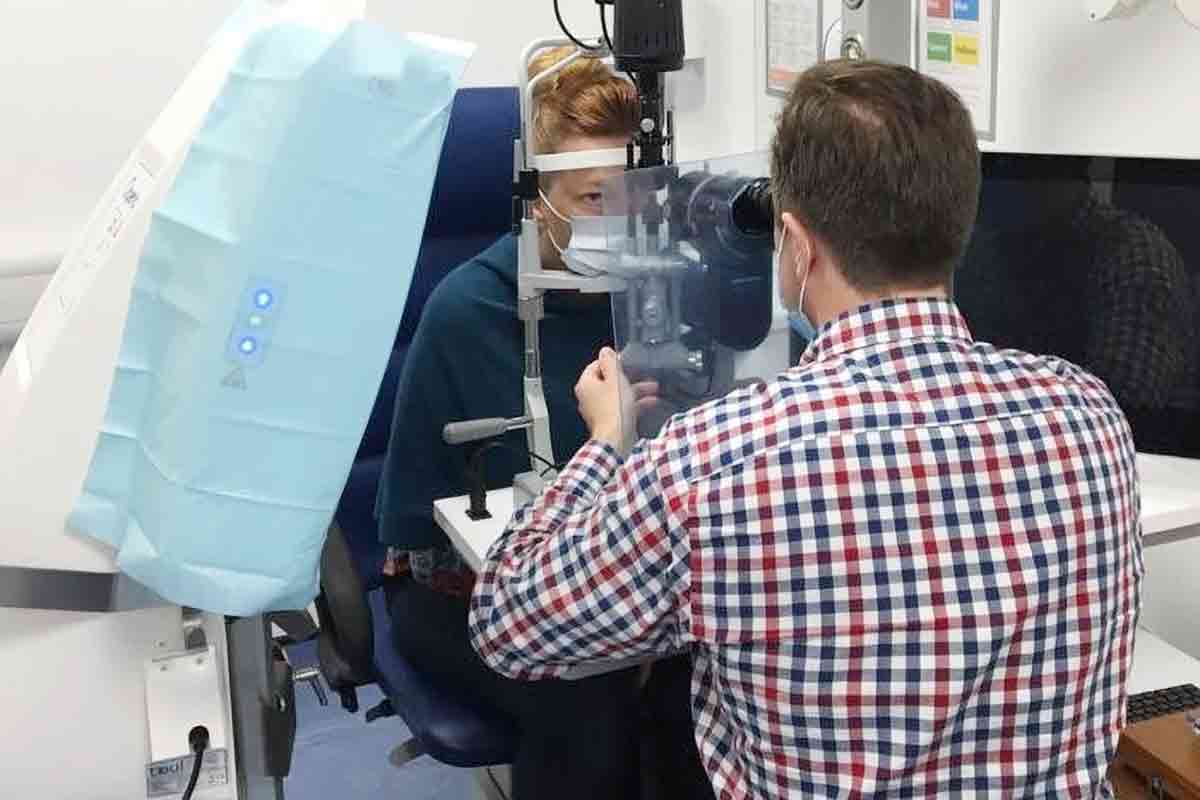
Your two large acquisitions earlier this year will also lower margins. What do you think would be a good long-term margin?
”I have said that we expect to be above 12% after the pandemic. This means that we will not fall back to the level we had in 2019”.
You haven’t communicated that yet, have you?
”I usually talk about it at investor meetings, but I haven’t put it in a report. We have been clear about our ambition. We have our long-term financial targets, which aim for long-term growth of 15% per year. Given the pre-pandemic margin level and the additions from our recent acquisitions, which have higher margins, it is reasonable that we can reach that level after the pandemic. If you had asked me a year ago if we would have over 18%, I would have laughed. But the pandemic has changed a lot of things”.
In 2020 and 2021, you made a series of major acquisitions that have increased AddLife’s sales by 3 billion. The purchase of UK-based Healthcare 21 alone this spring was about the same size as the whole of AddLife was when it went public in 2016. The group now consists of more than 70 companies. How many could it be in the future?
”Johan Sjö and I, the then CEO of Addtech, did a calculation a few years ago. We asked ourselves how big Addtech could really become and how many companies we could manage. We arrived at 349”.
What were you thinking?
”We were both economists, so we thought purely mathematically like this: A management team of seven people is enough. There are seven business areas that you can keep. Each business area can then have seven business units. It will be quite reasonable because then they can have their management teams, and each unit can have seven companies. This makes a total of 349. I don’t know if that reasoning works in reality. But it’s the best answer I have. When you buy companies on an ongoing basis, as we do, it’s incredibly important to have the capacity to take care of everyone. You can’t just buy companies and let them go. That’s not the idea. Instead, you have to work closely and develop together. It is important to have both human and financial capacity. Many people think that 70 companies is a lot. But when I started at Addtech in 2010, we had 70 companies with a turnover of around 3.5 billion. When we spun off AddLife in 2016, Addtech had twice as many companies – 160 or so. And it was really built with this 7-7-7 structure. Although at the time, we were five at the top and seven below”.
Have you given any thought to what would trigger an exit from a company or group?
”Did you think we were going to sell off?”
AddLife
- AddLife develops and acquires profitable, market-leading niche life science companies.
- The group consists of about 70 companies in two segments in selected niches: Labtech, which offers products and services in diagnostics, biomedical research and laboratory equipment. Medtech, which offers products and services in medical technology and home care.
- AddLife’s organisation is decentralised. Each subsidiary is responsible for its own business operations within the framework of the Group’s requirements for growth, profitability and sustainable development.
- The operating subsidiaries are currently present in more than 25 countries, mainly in the Nordic region as well as Central and Eastern Europe. Customers are mainly hospitals and laboratories as well as the pharmaceutical and food industries.
- AddLife was formed in 2015 as a spin-off from Addtech.
- In 2020, AddLife’s turnover was SEK 5.3 billion with an operating profit of SEK 650 million. The market capitalisation is approximately
SEK 27 billion.
You’ll get there sooner or later, won’t you?
”No. We have no thoughts on that. Since I became involved in 2010, we’ve sold only one company. It was a constellation of companies that didn’t really fit in. The management team then had to buy out the company. There was virtually no drama involved. So no. I’m not thinking of an exit. That’s not what our model looks like. I rather look at how Bergman & Beving have done. They have divided and divided. If we grow and become much bigger, we might think about whether there is a logical division”.
An IPO or something?
”Now you’re only speculating. There are absolutely no such considerations to my knowledge”.
In March, you were elected to Mölnlycke’s Board of Directors together with SEB CEO Johan Torgeby. Mölnlycke is a leading company in disposable medical products. Do you see any conflict for you between AddLife and Mölnlycke?
”We have a company in Sweden, Mediplast, which has maybe SEK 100 million in sales in the same segment as Mölnlycke. But we don’t see it as direct competition. Mölnlycke is so much bigger and has very strong brands. The issue was certainly discussed at Investor before I was offered the board position and then at AddLife’s board before I accepted”.
Addnode and Mölnlycke are your external board assignments. Given that you have 70 companies of your own, perhaps that’s enough?
”Yes. I think so. I feel that it is very informative to be involved in other companies. As a CEO, I feel that I must also develop and find ideas I can take home with me. I also feel that I can contribute to other companies through my long experience. The opportunity to have external board memberships is quite valuable”.

Doesn’t it feel strange to be on Mölnlycke’s board but not on your own?
”No, I don’t feel that way. The thought hadn’t even crossed my mind. In fact, it’s a good corporate governance model where I, as CEO, have the operational responsibility and the Board has its own responsibility. When AddLife was created, it wanted to divide the board and management functions”.
Do you have a company you look up to? Either within your industry or outside?
”I like the idea of being long-term. I look up to the long-term ownership that Investor, for example, stands for. Companies that are not quarterly-fixed and want to be part of society”.
How do you find new companies?
”It’s not just me but rather the entire team that should have all the credit here. That’s important to me. All our companies have competitors and know the other players working in the market. We therefore have a list of acquisition targets. We sometimes call up companies on the spur of the moment and ask if they would like to meet with us. Sometimes we get it right, sometimes we don’t. Sometimes it takes five years and sometimes it never happens. That’s one way. The second is that companies come directly to us. This was also one of the reasons why we wanted to become our own public company. When we were part of Addtech, we didn’t really get those proposals. But we do now. In the last year, we have received many more. We now also get suggestions from brokers who approach us with various cases. It’s like ripples on water – pure network effects. I have never had so many proposals in my inbox as the day after the last acquisition of Healthcare 21 for 2.4 billion. It seems that belonging to our group of companies is perceived as positive. Of course, we say no to some and others say no to us because they might think we pay too little”.
What do you pay, 7 to 8 times your profit?
”Yes. Historically it’s about that. Maybe 7.5 on average. But a bit more for the larger purchases. If we want to acquire a new platform, we have to
pay more for it. For example, the acquisition of VOG, which added ophthalmology, a completely new area for us. Or Healthcare 21, which
added two new markets: Ireland and the UK”.
You buy companies for 7–8 times the profit. But when that same profit goes into AddLife’s earnings, the stock market values it at 50 times. Is that sustainable?
”You’ll have to ask the market about that. My mission is to work and develop the company. But obviously the market likes
this type of company. And compared with Indutrade, for example, we don’t stand out. So far, we have shown that we are able to build and create value in the companies we buy. Value that they would not have been able to create themselves. We also work in healthcare, which is a very stable sector when it comes to structural growth”.
Are you actively working to help the stock market better assess AddLife and its share price? The company is currently followed by only one analyst.
”I have many direct contacts with both Swedish and international investors. But only Aktiespararna follows us. Everyone calls me to sell them an analytics service. But what is it worth if I pay for it? When investors ask me why no one follows us, I usually say that I can choose between paying half a million for analysis and making half a million more. Then you will also understand the answer. I refrain from the analysis”.
How did you end up at AddLife?
”After five years as CFO at Ericsson Sweden, I was offered a job as CFO at Addtech in 2010. One of the main reasons I accepted the job was when I read Addtech’s book The Mind and the Soul , which is about corporate culture and the decentralised business model. The content intrigued me, and I remember thinking that I had to work like that. Addtech then consisted of five business areas, one of which was called Life Science. In 2014, the idea of spinning off the Life Science business to the stock market was born. However, a major acquisition was needed to become large enough to become a mid-cap company that would be able to stand on its own feet. In the summer of 2015, Mediplast was acquired, and the process of spinning off AddLife was initiated. I was then asked by the two main owners, Tom Hedelius and Anders Börjesson, whether I wanted to become CEO of the future public company AddLife. In March 2016, we went public”.
Affärsvärlden erbjuder möjligheten att låsa upp artiklar för allmänheten, så kallad öppen access. Addlife har gjort detta och Affärsvärlden har även översatt den till engelska.
Här hittar du fler intervjuer
Kommentera artikeln
I samarbete med Ifrågasätt Media Sverige AB (”Ifrågasätt”) erbjuder Afv möjlighet för läsare att kommentera artiklar. Det är alltså Ifrågasätt som driver och ansvarar för kommentarsfunktionen. Afv granskar inte kommentarerna i förväg och kommentarerna omfattas inte av Affärsvärldens utgivaransvar. Ifrågasätts användarvillkor gäller.
Grundreglerna är:
- Håll dig till ämnet
- Håll en respektfull god ton
Såväl Ifrågasätt som Afv har rätt att radera kommentarer som inte uppfyller villkoren.


